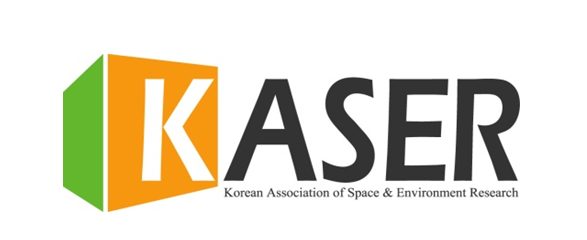ISSN : 1225-6706
논문 상세
- 2024 (34권)
- 2023 (33권)
- 2022 (32권)
- 2021 (31권)
- 2020 (30권)
- 2019 (29권)
- 2018 (28권)
- 2017 (27권)
- 2016 (26권)
- 2015 (25권)
- 2014 (24권)
- 2013 (23권)
- 2012 (22권)
- 2011 (21권)
- 2010 (33호)
- 2009 (31호)
- 2008 (29호)
- 2007 (27호)
- 2006 (26호)
- 2005 (23호)
- 2004 (21호)
- 2003 (19호)
- 2002 (17호)
- 2001 (15호)
- 2000 (13권)
- 1999 (11권)
- 1998 (10권)
- 1997 (8권)
- 1996 (7권)
- 1995 (5권)
- 1994 (4권)
- 1993 (3권)
- 1992 (2권)
- 1991 (1권)
1980년대 이후 한국 농지전용 급증 원인에 관한 연구: 농정의 변화와 국가의 개발행위 분석을 중심으로
A study on the causes of the rapid increase in conversion of farmland in South Korea since the 1980s: Focusing on analysis of changes in agricultural policy and state’s development activities
초록
이 논문은 한국에서 1980년대 농지전용이 급증하게 된 원인과 농지전용 현상에 개입한 국가의 이해관계에 관해 질문하고 이를 설명한다. 농지전용에 관한 기존의 연구들은 주로 농지전용을 도시화에 따른 불가피한 현상으로 이해하거나, 제도와 정책의 미비에 따른 문제로 인식하였다. 이 연구는 이와 같은 접근이 한국 농지전용의 특징을 설명하지 못하며, 농지전용의 원인을 규명하는 인과적 분석이 될 수 없다는 문제의식에 입각해 논의를 전개한다. 1980년대 중반 농지전용이 급증하게 된 이유는 자유주의 농정이 등장하고 농지유동화 정책이 전개되면서 농지가 개발이익의 형성과 재투자를 용이하게 하는 토지자원으로 활용되었기 때문이다. 자유주의 농정의 등장은 국가적 차원에서 농지 보전의 명분을 약화시켰다. 또한 국가는 취약한 재정 상황에서 정당성의 위기에 대응하기 위해서 농지전용을 활용한 개발이익 형성과 재투자 메커니즘을 적극적으로 활용했다. 1980년대 이후 도입된 매수 방식의 공영 토지개발은 개발이익을 형성해 이를 재투자한다는 설계를 바탕으로 하는 것이었기 때문에 정부는 이를 통해 개발이익 사유화 문제에 대처하는 동시에 재정을 최소화하여 주택공급과 도시 건설을 진행할 수 있었다. 이러한 개발 방식을 실행할 때 국가는 개발공사라는 대리자를 활용하며 재정 문제를 우회한다. 이상의 분석은 1980년대 이후 국가가 정당성의 위기를 극복하기 위해 채택한 전략이 토지자원 활용 방식의 변화를 수반한 것이었으며, 이러한 변화는 농지전용을 통해 구체적으로 드러난다는 사실을 시사한다.
- keywords
- 농지전용, 자유주의 농정, 농지유동화, 개발이익, 개발공사, conversion of farmland, liberal agricultural policies, farmland mobility policies, development gain, state-owned enterprise for urban development
Abstract
This study looks into and seeks to explain the causes of the rapid increase in the ‘conversion of farmland’ in Korea in the 1980s and the interests of the state involved in the phenomenon of ‘conversion of farmland’. Existing studies on ‘conversion of farmland’ mainly understand ‘conversion of farmland’ as an inevitable phenomenon due to urbanization or recognized it as a problem due to insufficient systems and policies. This study seeks to develop a discussion based on the awareness of the problem that such an approach does not explain the characteristics of ‘conversion of farmland’ in Korea and cannot be a causal analysis to determine the cause of ‘conversion of farmland’. The reason for the rapid increase in ‘conversion of farmland’ in the mid-1980s was that with the emergence of a liberal agricultural policies and the development of farmland mobility policies, farmland could be used as a land resource to facilitate development gain and reinvestment. The emergence of a liberal agricultural policies weakened the cause of farmland conservation at the national level. In addition, the state actively utilized development gain formation and reinvestment mechanisms using ‘conversion of farmland’ to cope with the crisis of legitimacy during weak fisical situations. Since public land development introduced after the 1980s was based on the design of re-investing by forming development gain, the government was able to cope with the privatization of development gain while minimizing finances as they proceeded with housing supply and city construction. In implementing this development method, the state bypasses fisical problems by using an agent called a state-owned enterprise for urban development. This analysis was accompanied by a change in the way land resources have been utilized by the strategy adopted by the state to overcome the crisis of legitimacy since the 1980s, and this change suggests that it is being revealed in detail through ‘conversion of farmland’.
- keywords
- 농지전용, 자유주의 농정, 농지유동화, 개발이익, 개발공사, conversion of farmland, liberal agricultural policies, farmland mobility policies, development gain, state-owned enterprise for urban development
- 다운로드 수
- 조회수
- 0KCI 피인용수
- 0WOS 피인용수

